Chapter 8: Working With the Camera’s Wireless Functions
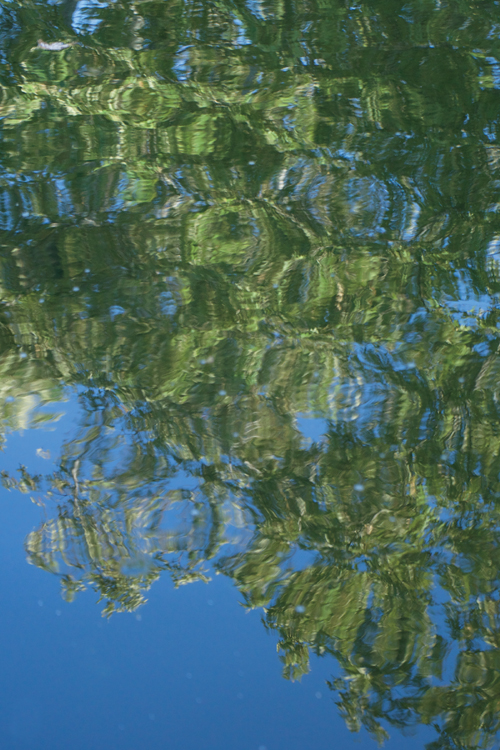
Introduction
Your Sony a7/a7R has Wi-Fi capabilities and can communicate with your wireless server, smartphone, and tablet computer. The communication to the wireless server is used for directly downloading apps from the Sony website, or it can be used to share your photographs on the Internet. You can, for example, upload the pictures stored on your camera to Flickr or Facebook.
We will not cover all the available Sony apps since it is an area that has the potential to change daily. At the time of the latest Sony firmware update, version 1.02, which came out March 2014, many of the apps were updated. Rather than cover each of the available apps, we will discuss a few that we’ve found to be the most useful.
Using the Camera Wirelessly
We rarely use our camera to directly upload pictures to our social media sites. We find the operation to be inconvenient. For one thing, it requires us to be near a Wi-Fi network. While this isn’t an issue when we are at home, it is inconvenient to seek out a Wi-Fi Hotspot when we are out and about, and stay there while we upload the images. If we need to share a photo on our social media site, we will use our phone, which will accomplish this task wherever there is a cell signal.
One of the reasons we don’t use our camera to directly upload to social media sites is that it’s difficult to type characters and numbers on the a7/a7R’s virtual keypad (figure 8-1). Typing with this function requires you to navigate to a key by moving a selection box with the directional buttons. Once the key is highlighted, you press the center button to enter it. Each key input requires several presses of the camera buttons. If you count the clicks required to move the selection box to the correct character, you may have to do six or more clicks just to select and enter one letter! As a consequence, we do not use Sony’s app Direct Upload to upload to Flickr or Facebook account.
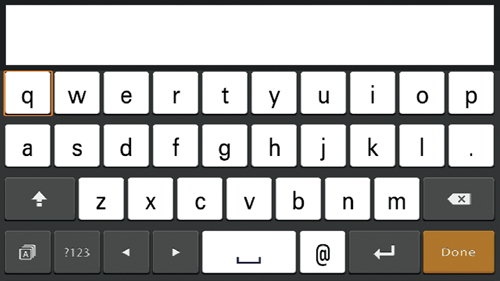
Figure 8-1: Sony’s virtual keyboard as displayed on the a7/a7R’s LCD
You can avoid this tedious task by using a device that has a better keyboard layout, such as your computer or cell phone. In a similar fashion, we find it easier to download apps from Sony’s website to our computer. This allowed us to avoid having to enter in our Sony passwords to their website when using our camera. Once the app is downloaded to our computer, it is transferred to the camera by using the Sony supplied USB cable.
We mainly use our camera’s Wi-Fi to communicate with our iPad and iPhone for remote firing of the camera. This is an excellent feature for studio, scenic, or close-up work. You can mount the camera on a tripod and view the scene with your tablet computer or smartphone. This allows you to move about, stage the scene, and arrange the lighting so it creates the proper mood and enhances the subject’s features. If you work with flash illumination, you can take the picture, quickly review the results on the tablet’s larger screen, and re-stage the scene without having to go back to the camera. When working in our laboratory, we use our tablet as a preview monitor when doing macro photography or photomicrography. We can judge focus, evaluate depth of field, and control lighting while studying the subject on the tablet’s screen. While these tasks can be done on the camera, the LCD’s small size makes it unsuitable for critically evaluating the image.
Using Sony’s Wi-Fi for this task will require you to download Sony’s Smart Remote App.
Downloading Apps
The first step to getting the Smart Remote Control App is to go to the following website via your computer:
https://www.playmemoriescameraapps.com/portal/
You will need to create an account with Sony, which requires you to give them your credit card number. As long as you download apps that are free, your card will not be billed. Fortunately, the Smart Remote Control App is free and we urge you to get it—we believe you will find it exceedingly useful.
The web instructions for creating an account are clear, and once completed, you can start the process for downloading. To do so, make sure your camera has a fully charged battery. If you own an Apple computer, navigate to the following camera menu command:
Menu>Setup (4)>USB Connection>[Auto], [Mass Storage], [MTP], [PC Remote]
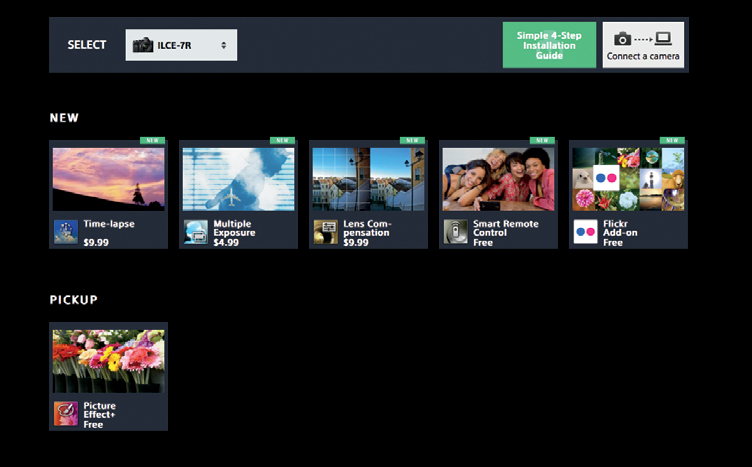
Figure 8-2: Computer screenshot of Sony app page
The default setting for this command is [Auto], in which the camera is supposed to automatically shift to either [Mass Storage] or [MTP]. When using our Apple computers, this switch did not occur and our computer would not communicate with the camera. To load our app, we had to set the option on our camera to [MTP] manually. Next, connect your camera to your computer’s USB port with the cable included with your Sony camera.
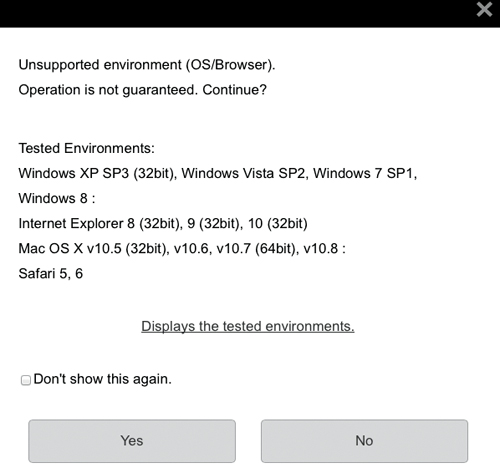
Figure 8-3: Computer screen warning that the operation is not guaranteed
Look through the selection of apps on Sony’s website (figure 8-2), and find Smart Remote Control. warning message (figure 8-3) will be displayed stating that the operation is not guaranteed. We noted that Apple’s latest OS and the latest version of Safari had not been tested by Sony—hence this message. You will see a list of OS versions and browsers that Sony has tested for compatibility. Although the latest versions of the Apple OS and Safari were not on this list, we ignored this warning, downloaded the app, and installed it on the camera. This task was accomplished successfully with no ill effect to our camera or computer.

Figure 8-4a: Camera LCD: Menu command’s Application List option
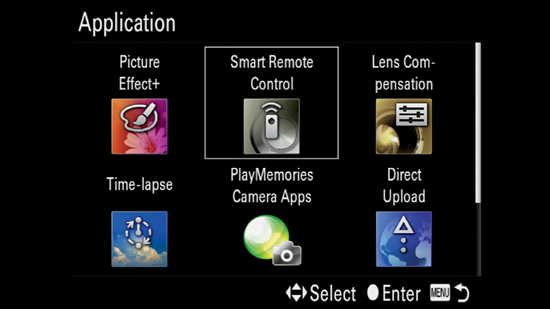
Figure 8-4b: Smart Remote Control app selected
Working with Tablets and Smartphones
Once you have the Smart Remote Control installed in your camera, you need to prepare your tablet or smartphone to communicate with this app. This requires you to get the free PlayMemories Mobile software and download it to your smartphone or tablet. For Android phones and tablets, download it from https://play.google.com. For the iPhones and iPads, download it from Apple’s App Store. Once you have it installed on your device, you can use it to communicate with your camera and phone. Set up this capability on your camera with the following menu command (figures 8-4a and 8-4b):
Menu>Application>Application List>Smart Remote Control
Assuming this is the first time you’ve connected your smart device to your camera, you will see a screen like the one shown in figure 8-5. This indicates that the camera is working as a transceiver. Next, you need to check your smart device’s Wi-Fi settings. Locate and select the a7/a7R’s SSID (figure 8-6). On your smart device, you will need to enter the camera’s password, which is displayed at the back of the camera on its LCD screen. Once your smart device indicates you have a link, validate that the smart devices’ PlayMemories Mobile app is active. We use this app frequently and will comment on its behavior during subsequent pairings of the iPad to the camera. Now your smart device should display your camera in Live View.
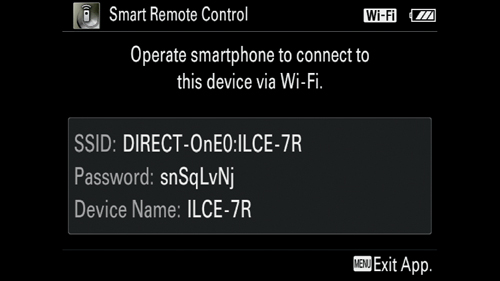
Figure 8-5: Camera LCD showing its SSID, password, and Device Name
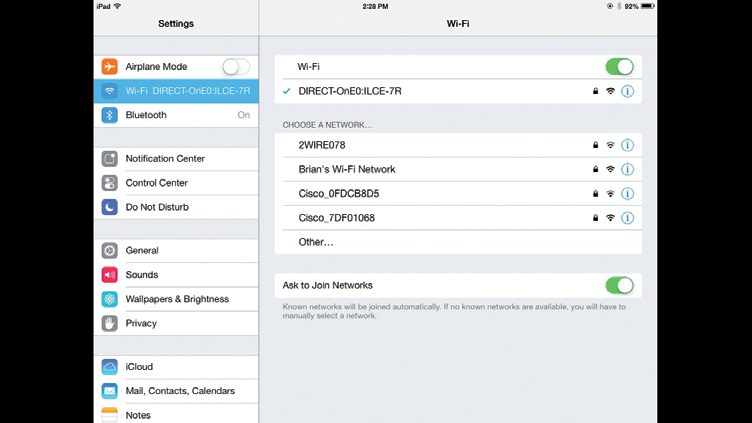
Figure 8-6: iPad screen showing that it’s communicating with the a7R
On subsequent uses of the Smart Remote Control app, you will not have to enter the camera’s password again. It will be remembered and inserted when the smart device connects to the camera’s Wi-Fi signal. However, this connection may not occur automatically. When our iPad is connected to our home wireless system, it does not relinquish this connection voluntarily when it detects the signal from the camera. You will have to go to the iPad’s Settings screen and manually select the Wi-Fi signal from your camera. Once it is selected and activated, you will then have to turn on the PlayMemories Mobile program. To avoid this problem, we find it easier to simply tell our iPad to “forget” our home Wi-Fi signal. When this is done, the iPad will automatically sign onto the camera’s Wi-Fi broadcast.
Smart Remote Control
We highly recommend downloading this app. First, as the title implies, it provides a way to fire your camera remotely. It is a very worthwhile app if, for no other reason, it will save you the $29.95 you would have had to spend on Sony’s Remote Commander for firing your camera from a distance.
This app lets you override the camera’s recommended exposure when using P, A, or S mode to see the results of your changes on your smartphone’s screen. As you can see in figure 8-7, the shutter speed, f-stop, exposure compensation, ISO, and the shooting mode are displayed on your smart device. In this app’s early versions, you could not control the zoom. With the newest 1.02 firmware version, you will see two buttons with the letters W and T. These buttons control the motorized zoom of three NEX series lenses. Currently there are no FE lenses with a motorized zoom for sale, but Sony has shown a prototype of a 28-135mm FE lens with a motorized zoom. Sony indicates that this lens is being developed, but there is no price or release date. You will also see a silver circle containing a symbol for a camera. This is your smart device’s shutter release icon. Since your tablet or smartphone has a touch screen, touching this icon fires the camera. There is an icon of a thumb with the word “FOCUS” on the lower-left corner of the screen. This is Sony’s Touch Screen Focus control. When you press this icon, you can touch a region of your smart device’s screen and it will become the point of focus for the camera. When focus is achieved, you will see a green focus confirmation bracket on the spot that you just touched. Press the smart device’s shutter button to take a picture. Notice the word “FOCUS” will be replaced by an “x”. This is the prompt that lets you know you can turn off this feature.
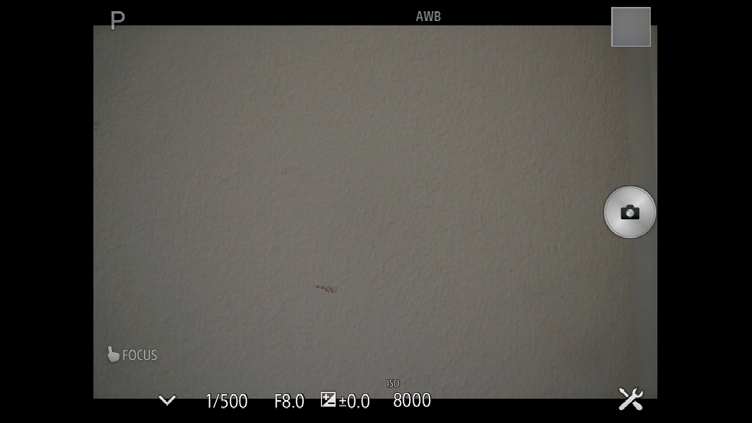
Figure 8-7: iPad screen showing the icons and the shutter icon
The symbols displayed on the screen are touch sensitive; when pressed lightly, they allow you to change the ISO, aperture, shutter speed, and the extent of exposure compensation. For example, if you press the exposure compensation icon, you can change its value. In figure 8-8, the camera is being set to + 1.0 EV.
Not all of your options are visible in the preview screen. If you look at the lower-right corner of the screen, you will see a symbol of a crossed wrench and screwdriver. This is the tools icon. Touching it will bring up a new screen with additional settings for adjusting the white balance, the self-timer, how you review and how you save the captured image, as well as the quality of the Live View (figure 8-9).

Figure 8-8: Screen after EV button is pressed—EV adjusted +1.0 EV
If you select white balance, you will see its preset options at the bottom of the screen (figure 8-10).
The Self-timer command allows you to delay firing the camera by two seconds after pressing the shutter button icon on your mobile device. We leave this option [Off] because we do not notice any improvement in image quality when using it. When the a7 camera model exposes the sensor, the electronic first-curtain shutter does not vibrate and there is little reason to delay firing the camera. In the case of the a7R, whose mechanical shutter does impart some movement, we did not observe any improvement in image quality when we fired the camera with a 2-second delay.

Figure 8-9: Smart Device: Additional commands for Smart Remote Control
We leave the Review Image option [Off] when shooting with ambient lighting. Live View provides a good indication of what will be captured and we see little value in reviewing pictures taken under these conditions. However, we will turn it [On] if we shoot with flash. Since you cannot preview the results with this type of lighting, being able to review the shot is the only way to evaluate the effects of your lights. This will help you determine if you need to reposition the lighting for your next shot.
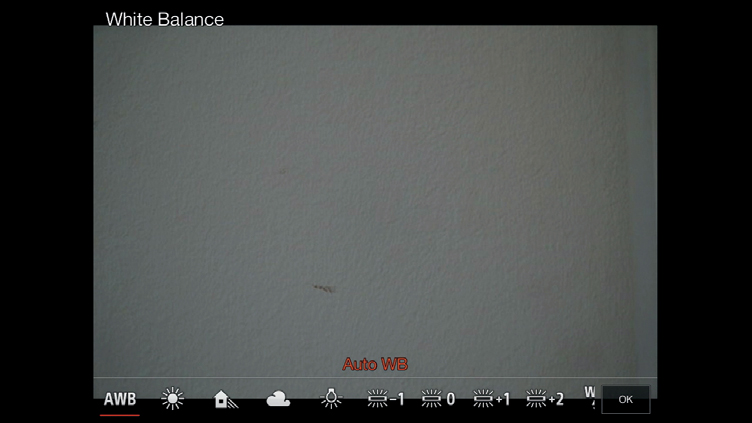
Figure 8-10: Smart device: WB adjustment from Smart Remote Control screen
The Save Options allows you to save your image to your smart device. We generally do not do this for two reasons: first, the image is already saved to the camera’s SD card; second, it takes a few seconds to transfer the image to the tablet or smartphone, which slows our workflow.
In order to maintain a fast workflow, we keep the size of the Review Image to 2M. Although the Live View Quality can be changed from [Standard] to [Image Quality Priority], we generally keep it at [Standard], the default option. While selecting [Image Quality Priority] provides a slight improvement in resolution, it tends to slow the response of the smart device’s ability to execute commands.
Although it might appear that you can make all your adjustments from the smart device, this is not the case. There are some options that require you to push buttons on your camera. For example, you will need to press the menu button on the camera to implement commands for controlling the app. For instance, you can only exit the app from the camera screen (figure 8-11a). Furthermore, there are additional pages (figure 8-11b) for adjusting the file format, image size, aspect ratio, Flash, Focus Area, DRO/Auto HDR, Drive, Metering Mode, Creative Style, Picture Effect, and Face Detection. Having to work with both the camera controls and the smart device is an inconvenience. We hope that future upgrades of the app will have all the operational controls being placed on the smart device.
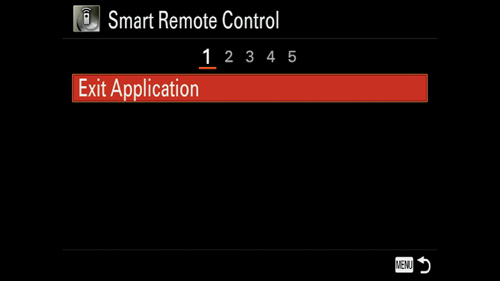
Figure 8-11a: First page of Smart Remote Control menu
Keep in mind that Sony updates their apps independently of the camera firmware. We recently found that the current version of Smart Remote Control has been upgraded substantially. The original firmware version released for the NEX-6 did not allow us to record RAW files to the SD card. The newer version for both the NEX-6 and a7/a7R cameras does. Since the upgrade is free, you should visit Sony’s site periodically to check for their availability (the company does not provide email notifications of these updates to its customers).
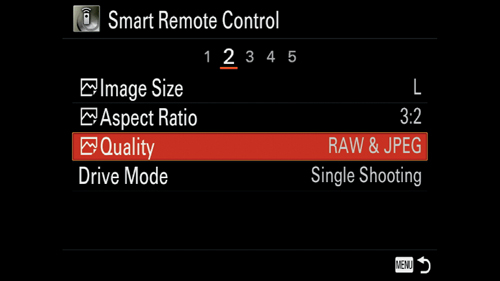
Figure 8-11b: Second page of menu for Smart Remote Control menu
Additional PlayMemories Camera Apps
Downloading apps to your camera can be an addictive experience. Once you have an account, you can download apps to take time-lapse videos, make multiple exposure images, or correct optical errors with lens compensation. The most expensive apps cost $9.99, others cost $4.99, and the remaining are free.
Before downloading the apps, you should be familiar with your camera and its controls and how they interact with the app. Fortunately, you do not have to buy the app to do this. You can read its specifications and its instructional manual before buying it. The only difficulty in accomplishing this task is finding the instructions. Here is some help. You will see an app listing when you are at: https://www.playmemoriescameraapps.com

Figure 8-12: Screen for reading specifications and instructions for Smart Remote Control
Most of the apps are shown as an icon. When you see one that interests you, double click on its icon. For example, let’s investigate the free app, Smart Remote Control. A new screen appears with its version number (figure 8-12), a list of compatible cameras, and a dark rectangle with white letters that say “Install.” Above this rectangle is the text: “Specifications” and “Instruction Manual.” Click on these to see the app’s specifications and manual. This should be sufficient to determine if the app will serve your needs. If it does, download it and install it on your camera, and it will be available on your Application List.
There are three benefits to downloading apps. First, you are guaranteed the availability of all the apps you’ve downloaded, even if they are lost from your camera. For example, taking the battery out of the camera before turning it off can erase the apps. If you reboot the camera using the Setting Reset command’s [Initialize] option, the apps will be erased. Fortunately, Sony keeps a record of your downloads and you can reload all of your purchased apps at no additional expense. Second, you can use your apps on several different cameras. If you had downloaded apps for a NEX camera, you will be allowed to download those apps (provided they are compatible) to your a7/a7R at no charge. You can load the same app onto ten individual cameras. For example, the Time-lapse app is the same for the a7/a7R and the NEX-6, and we discovered it could be downloaded on all three cameras for the one initial cost.
Third, there is no charge for upgrades. For example, the Time-lapse app has been upgraded twice since we initially purchased it for our NEX-6. Originally this app could not vary its exposure for changing light conditions. This was satisfactory for general subjects taken in constant lighting, such as clouds moving across the sky, but it was limited for sunrises and sunsets when the goal was to have a daylight and night view of these transitions. The sun’s appearance or disappearance changed light values so much that parts of the movie were either severely overexposed or underexposed. The second version of the app allowed the camera to alter its exposure to prevent this from happening. However, while the camera could alter its exposure, there was no control on how rapidly the camera would adjust its exposure between adjacent shoots. The third and most recent version (released March 19, 2014) allows the photographer to provide this control. Considering the purchase of the app has the benefits of being able to be downloaded onto up to ten cameras, unlimited access, and continual upgrades, its price of $9.95 is very reasonable.
Time-lapse
Time-lapse cinematography records images over an extended period so that when they are played back at video rates, the movies show an accelerated passage of time. It is a technique to view those events whose movements are too slow to be appreciated in real time. With this technique, you can follow the opening of flower petals, the sun sinking beneath the horizon at sunset, or clouds moving across the sky.
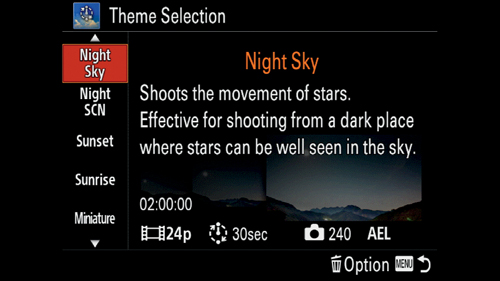
Figure 8-13: Time-lapse app showing its theme options
This is a challenging app to work with because you need to anticipate how the image will change with time. It is designed to fire the camera at predefined intervals. The shortest interval is one second, which means that when you view the movie, things will be moving at least 24 times faster than they moved in real time. An event that requires four minutes to transpire will create a movie that can be viewed in 10 seconds. If you want to speed up the playback even more, you use longer intervals between shots. Setting the interval to 10 seconds for the same four-minute event will provide a movie that lasts only a second.
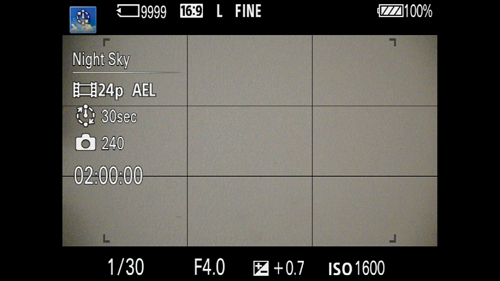
Figure 8-14: Live View of Time-lapse app
Sony tries to make creating these movies easy. The process begins with selecting a theme (figure 8-13) to be used under specific conditions. For example, there are themes entitled Cloudy Sky, Night Scene, Night Sky, Sunrise, Sunset, and Standard. For the neophyte, you match your subject to the theme to provide the settings most suitable for recording the event. There are brief descriptions of each theme to help you decide which one to use. In addition, there is a wealth of information on the settings each theme employs. Using figure 8-13 as an example, the camera will be in operation for two hours, fire 240 shots at 30-second intervals, and the video will be saved as a 24p (24 frames per second progressive). The exposure will be locked and not altered after the initial shot. If the recommended settings are acceptable, press the center button to select them and go to Live View for framing and composing your subject (figure 8-14).

Figure 8-15a: Option menu in Time-lapse, 240 photos to be taken
You do not have to accept the theme’s initial setting. Instead of pressing the center button, you can alter these settings by pressing the Option menu (delete or C3 button). This screen allows you to alter the settings of the time-lapse. You can change the file format for the movie, the total number of shots to be taken, and the interval between the shots (figure 8-15a). A very useful feature of this app is that it calculates the viewing time of the video that will be recorded. The “10 sec” shown at the bottom of the screen is the calculated length of the resulting movie. If you are taking 240 pictures and showing them at 24 fps, then the length of the movie will be 10 seconds. The up and down buttons are used to select the file format, interval, and shots. Once you highlight one of these categories, you can change their values with the left and right buttons. Figure 8-15b shows one alteration: instead of taking 240 shots, the value has been changed to take the maximum number of 990 shots. The camera takes the entered changes and calculates how this will effect the duration of the shoot and the length of the movie. In this case, the camera will be in operation for 8 hours and 15 minutes and will produce a video of 41 seconds in length.

Figure 8-15b: Option menu in Time-lapse, 990 photos to be taken
The movie files you create with this app will be AVI files and they will occupy a different directory than other image files (figure 8-16).
To playback these stored movies on your camera for review, you will have to be in the Time-lapse app. Once in the app, press the playback button to see thumbnails of each time-lapse sequence. These are the first frame of each Time-lapse movie (figure 8-17). Press the center button to watch your recorded movie. If you leave the Time-lapse app, you can replay only those movies that you had taken in regular time.
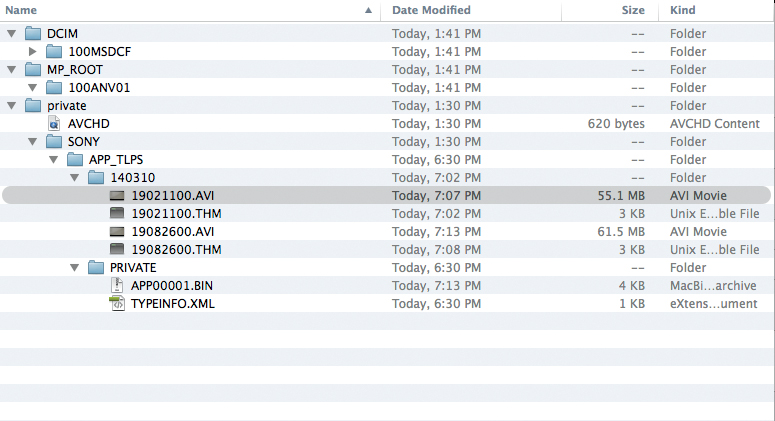
Figure 8-16: File directory of SD card showing two AVI Time-lapse files
To download the Time-lapse movies to your computer, use either PlayMemories Home or iMovie. These files are not like AVCHD files. You can use a card reader and treat your SD card like an external drive. If you go to the directory shown in figure 8-17 and select the AVI files, you can copy the Time-lapse movies to your computer’s hard drive.
An interesting feature in Time-lapse is an option that allows you to save your files as individual JPEG still frames. These will be stored in the same directory as your still photographs. With this option, we downloaded the JPEG files and by using a freeware program, ImageJ, created a movie file whose individual frames were 4800x3200 pixels. This is a huge amount of data and exceeds the frame size of HD videos (1920x1080 pixels) by three times. Indeed, the pixel array in this mode is larger than that achievable by a 4K video camera.

Figure 8-17: Playback screen of Time-lapse showing movie’s first frame
Before moving on from the Time-lapse app, we will discuss one of its newest settings. First, keep in mind that the majority of themes used in this app set the exposure on the first image taken and then lock it to that value (AE Lock). This is to avoid the problem of flickering, which is a condition that occurs if the camera adjusts its exposure in response to changing light intensity. When playing back the movie, this is evidenced by either a sudden increase or decrease in the scene’s lighting. To avoid this problem, the first release of the Time-lapse app locked the exposure on the first shot and kept the subsequent exposures at that value—unfortunately, that design limited the ability to record sunsets and sunrises. For example, if the exposure is unable to change, you won’t be able to record a sunset that spans from daylight to twilight to night because the change in light will reflect a well-exposed daylight scene that gradually gets darker and finally fades to black.
If, however, the exposure could be increased to compensate for reduced levels of light, it would be possible to record both the daylight and the night scene. One way of accomplishing this is to use automatic exposure throughout the time-lapse sequence—a feature that Sony describes as AE tracking. This is an additional feature on the upgraded Sony Time-lapse app. Moreover, this feature also enables the user to control the rapidity at which the camera adjusts its exposure. It can be set to low, medium, or high. This provides a smoother transition of the scene as the light level drops. This is a finicky control and its successful application can only be achieved through experience, but it’s a handy control for those who want to improve their time-lapse movies.
Lens Compensation App
The Lens Compensation app seems redundant because there is a series of commands in the camera’s Custom Settings menu called Lens Comp. These are to be used with Sony’s FE lenses, and they provide automatic correction for vignetting, distortion, and lateral chromatic aberration. These adjustments are part of the a7/a7R’s software, and the extent of the correction is not under your control. The command is normally turned on so that the saved image file will not show these optical aberrations. If the Lens Comp. command option is turned off, the image files will have vignetting, distortion, and lateral chromatic aberration.
The downloadable app is different. It requires you to mount the lens and manually correct its deficiencies by altering the settings within the app. These adjustments are saved and can be used to improve the performance of the lens. It will also work for non-Sony lenses. This can be a handy application for users of legacy lenses because it may improve the captured image for those lenses exhibiting optical deficiencies. Moreover, this app can override the correction applied by the menu command so you can change the degree of automatic compensation provided by Lens Comp. for the FE lenses.
To avoid confusion, we will refer to the downloadable program as the Lens Compensation App. It must be downloaded from Sony’s website (www.playmemoriescameraapps.com) and will cost $9.99. Once downloaded to your camera, select the Lens Compensation App from your Application list:
MENU>Application (1)>Application List
Once you start the app, you will enter a screen with the Lens Profile List on the top line. When you first use this application, the list will be empty. Highlight the Create/New selection (figure 8-18). The next screen will require you to input a lens name, its focal length, and its f-stop (figure 8-19). You will have to use Sony’s virtual keyboard for this task. Keep in mind that the app’s lens compensations only apply to a single focal length, so it is best used for prime lenses. It is less suitable for zoom lenses because they may exhibit a change in aberrations as you change their focal length. Since you will probably change focal lengths when using such a lens in the field, you will have to make a decision on what focal length you will apply the adjustment to. Although it is theoretically possible to select several different zoom focal lengths, this strategy will prove cumbersome.
To use the program, highlight an optical characteristic you wish to change—in this case (figure 8-19), we have highlighted Peripheral Shading (Vignetting). Before you undertake any correction, you should know ahead of time how and where you will take your photograph. Using this app effectively requires some planning. For example, if you plan to correct for peripheral shading, you should find an evenly lit white surface, mount the camera on a tripod, and do a custom white balance.
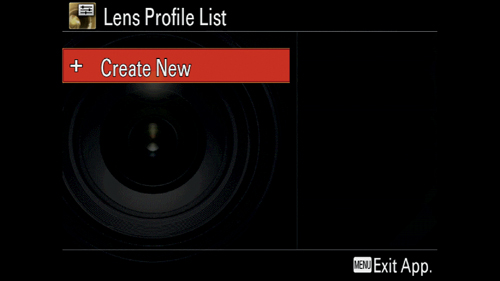
Figure 8-18: Creating a new lens profile
Once completed, press the center button to activate the Peripheral Shading correction process. As soon as you do this, you will see a new screen that provides a live view through the lens. To the right of the screen is an orange dot, which can be raised or lowered with the up and down buttons. There are three rectangles at the bottom of the screen, each with a square icon in the middle. Use the right or left button to navigate. The three squares represent the types of shading you might see. The first one on the left is a neutral darkening of the corners with no color cast; the next is a shading with a magenta color cast; the last one on the right is shading with a blue color cast. Figure 8-20a has neutral (no color cast) peripheral shading selected. By raising the orange dot with the up button, you can progressively lighten the periphery of the image. Figure 8-20b has a correction of +13 applied. This is too much correction, so that the periphery of the image is lighter than its center.
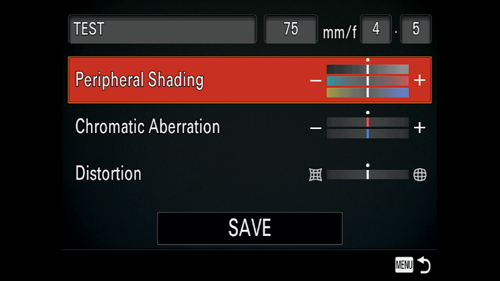
Figure 8-19: Lens profile for TEST focal length
If you wish to correct for distortion, press the right button until you get to the distortion icon. When that icon is highlighted, mount the camera on a tripod and find a subject with straight, parallel lines running horizontally and vertically. You should align your sensor so its horizontal and vertical frames are parallel to those lines. On the right side of the screen is a vertical bar that shows a barrel distortion icon at the top, and a pincushion icon at the bottom. By moving the orange dot with the up and down buttons, you can correct these distortion errors. Once you have corrected it, press the MENU button. This will return you to the screen seen in figure 8-19. Move the red bar down to highlight SAVE and press the center button. You have now performed and saved the corrections for peripheral shading and distortion.
We recommend using this app for correcting these two optical defects. We do not, however, recommend using it to correct for chromatic aberration. It should be noted that the color fringes arising from chromatic aberration are not apparent when using the camera’s monitor or electronic viewfinder. Evaluating its extent or the degree you corrected it requires viewing a saved image on your computer screen. In other words, unlike the correction for peripheral shading or for geometric distortion, you do not have immediate feedback when you adjust the settings on the app. Instead, you have to apply a correction and hope you corrected for color fringing. Basically, you apply a correction, take a photograph, and load it onto your computer to see if the problem is solved. In essence, you are doing this “blind,” and it’s likely that too much or too little correction will have been applied. This will require you to return to the camera, try another setting, take another photograph, and check the results again. Needless to say, this can be time-consuming, so you have to decide if it is worthwhile to implement the correction using the camera’s app or just apply it in post-processing. Both Adobe’s Photoshop and Apple’s Aperture have the ability to remove the color fringes introduced by chromatic aberration and therefore we choose to use these programs to correct this type of defect.
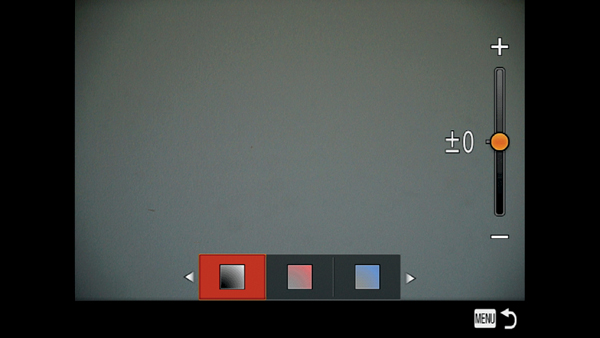
Figure 8-20a: Lens displaying vignetting with no correction being applied
This brings up the question of whether you should utilize the Lens Compensation app to correct geometric distortion or peripheral shading. We do employ this app for correcting these two optical problems because it’s easy to make the adjustments on the rear LCD and there is no trouble to establish the correct settings.
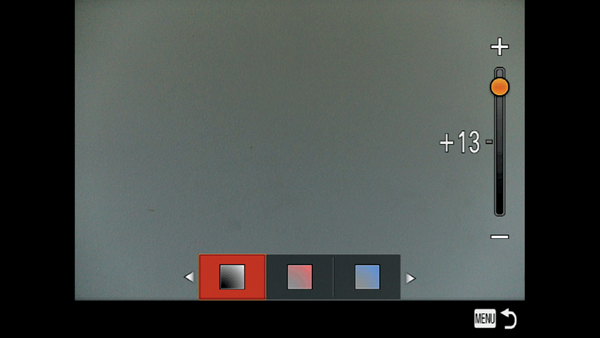
Figure 8-20b: Overcorrecting for vignetting
Recommendations
When Sony first came out with downloadable apps for the camera, we debated their utility and value. We have found that the apps are useful and are fun to play with. With so many apps to choose from, we covered the few that we found to be the most useful. For our working style, we use apps when they simplify our workflow. We ignore apps that are used to process images on the camera’s small LCD; we prefer to use our computers with their large monitors for image processing.
We described the most useful three apps in our workflow: Smart Remote Control, Time-lapse, and Lens Compensation. Smart Remote Control facilitates our scientific photography because we can mount our camera on a tripod, a focusing rail, or a microscope, and have a large preview screen for framing and composing our image. The app provided just enough photographic controls that we felt it was indispensible for this type of work. If you like the live preview advantage, the tablet is the ideal choice. However, your smartphone is useful as a controller. We often find ourselves needing a remote triggering device, and while we might forget our cable or infrared remote release accessories, we never forget our phones. This feature is always available, even if you don’t have cell phone coverage, because the communication is between the camera’s and the phone’s Wi-Fi transceivers.
We were surprised how often we used the Time-lapse app. This one is fun to use and makes taking this type of movie easy. The availability of themes provides the newcomer an easy introduction to this type of recording. If there is one limitation to the program it is that you will be limited to preparing a movie whose maximum length is 40 seconds. However, those 40 seconds can record a whole day’s activities.
The Lens Compensation app is used with our legacy lenses. However, while we take advantage of its correction for shading and distortion, we found it too laborious to use for compensating chromatic aberration.
We strongly recommend trying these apps and checking out the others. Keep in mind, apps can be added to the Sony website anytime, so you might want to put a reminder on your calendar to check for updates and new apps. We are sure you will enjoy the results.
